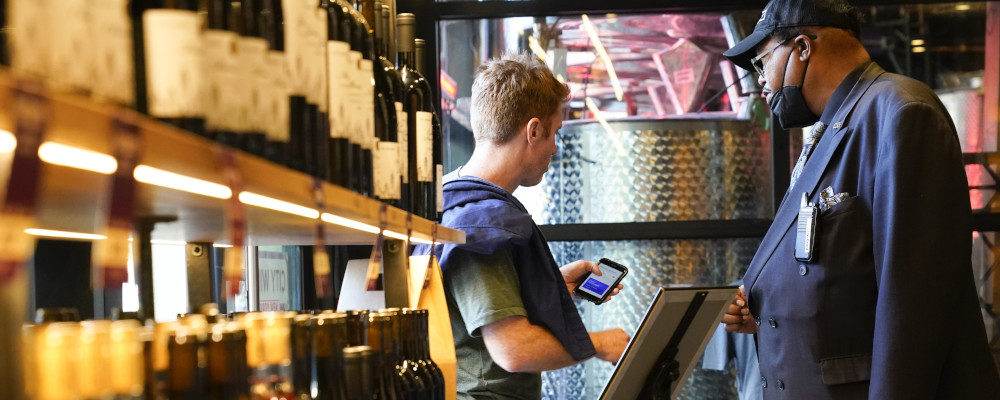How much should a bottle of wine cost? This question reminds me of Marshall McLuhan’s answer to the question of what is art: “anything you can get away with.”
I used to think of that line a lot when I looked over a restaurant wine list in the pre-COVID days. Being close to the trade, I knew the “licensee price” of most of the wines and could calculate by degrees of precision the mark-up. Often there would be no set formula. Some wines would be well marked-up, while others (maybe favourites of the house) would be modestly so.
MORE SIGNAL. LESS NOISE. THE HUB NEWSLETTER.
Restaurants, of course, have lots of very good reasons to mark-up the wines they sell, like making payroll, rent and keeping the lights on. The margins in the fine dining hospitality business are notoriously low, and after the last year and a half one can only imagine the depths of the holes out of which surviving restaurants must now dig.
One surprising development out of the COVID shutdowns in Toronto was the willingness of many consumers to pay restaurant mark-ups for wines at impromptu “bottle shops” that were hastily formed when the provincial government allowed take-out liquor sales. Context matters, and we’ll pay more for a wine when it’s part of a special occasion (see Champagne).
The retail world is a different matter. Just under half of the wine sold in the world is “bulk,” which is to say it’s not initially sold in bottles, but more likely in tanks, to be bottled or boxed by the initial buyer, as a consumer good that costs around $10 for a standard 750 ml bottle or less. Even in the markets for “bottled wine,” that has been bottled where it was made, anything that costs more than ten American dollars is considered “premium.”
If, and when, I am asked if I have found any good wines lately, I always ask for a price range before I answer. In anticipation of being asked again, as our double vaccinated social lives begin to resume their pre-March 2019 pace, I thought I would organize my answers in a general way below. Prices are for a standard 750 ml bottle of still wine, bought off of a shelf, and intended to be drunk soon.
$10 and under
Cheap wine is often a false economy, especially the next morning. It costs money to make wine all throughout the creative process, from farming, to production, to bottling, to transportation and distribution, and to marketing. It also takes time to ferment and form. Any wine that sells for $10 or less is very likely going have cut corners in at least one of those things. So the trick to finding anything decent is to look for wines where there is an external factor that keeps costs low. More often that’s cheap labour, coupled with a favourable exchange rate. There are good wines from South America and South Africa that float around this price point for this reason. Alternatively, there are concept wines from Spain and Portugal that take advantage of surplus production there, and a ready market in Northern Europe. In my home province of Ontario, the liquor monopoly publishes the sugar levels in all the wines they sell. I am generally wary of any wine with a residual sugar level of more than six grams per litre. At $10 or less it’s worth checking this level.
$10-$15
The low end “premium” level of wine is less fraught with cut corners. I look for organic wines from South America or South Africa, or co-operative wines from Southern Europe. I realize that recognizing a co-operative wine is a bit of insider baseball, so put another way, wines from regions of France or Italy where rock stars don’t buy estates and there is no longer a landed gentry. As with the previous price tier, I find sugar levels a relatively good indicator of quality: a wine with lower sugar may have higher alcohol, but unpleasant flavours won’t be masked with sweetness. A wine with only two grams per litre of residual sugar is probably not trying to hide anything.
$16-$20
This is my sweet spot and the price point that drove me to become a wine writer nearly 20 years ago. The two newspapers that I read in the early 2000s had wine critics, but they almost always ignored this category. The populist paper stuck to wines at $10 or less, while the critic at the haute-bourgeois paper (who I respect very much) tended to write about wines for collectors that began at $40 and up. I started a newsletter to tell my friends and family about the great deals for $20 and less.
These days, a lot of those $20 wines now cost $30 or more, but new ones from emerging regions have taken their place. Furthermore, the places that a generation ago made $20 wine, that now costs twice as much, also make second or third wines from younger vines or parcels that don’t quite make the grade of their flagship bottling. But they are still made to the same high standard. So, the producer from Vacqueras that I used to buy from regularly 20 years ago has doubled their estate bottling, but now they have a Côtes-du-Rhône that’s great and benefits from those extra two decades of winemaking skill and relationships with local growers. It’s in this price level that exciting things happen. Watch this space for more, and more specific, coverage.
$21-$50
This premium price range is a minefield. The greatest value per mouthful of wines exist here. This year a $30 wine made a few years ago in a corner of Northern Italy might cost $60 next year because they sold out their allotments in Milan, New York and Montreal. This is to say, if as a consumer you win in this level, you win big. This also the level of top of most restaurant wine lists. So, if you order something you really like for $70-$90 at your local bistro, Google it and order a case from the importer at least half the price. It’s also full of giant turkeys. Wines that are way over valued and and trading reputations that ought to have expired a long time ago.
This is also zone where most well made Canadian wines live. It costs more money to make wine in Canada than nearly anywhere else in the world, and our industry doesn’t benefit from the kind of help that is on offer to agricultural industries in the EU. If you want to drink local, then you’re going to have to pay more. That’s just the way it is, at least for now.
$50-$99
After $50 wine pricing is more about demand and scarcity of supply than anything else. There are, for instance only so many acres of vines in the Napa Valley or the Côte-d’Or, and there are millions of people who want to drink the wines. It’s Economics 101. There is value in these wines in so far that one might buy one today from a recent vintage at $60 and find in ten years that it’s now worth $200.
At any price, wines that cost this much ought to be very good. That is to say they should be in balance and showing some complexity or distinct and pleasing character. And generally, in my experience, they are. Though sadly, not always.
$100+
The New York City restaurateur, sommelier and winemaker, Joe Bastianich writes in his memoir, Restaurant Man (2012) that no wine should cost more than $100. What he means is that all the best inputs, from the the site of the vines, to the cost of hand farming to the craft in the cellar, could exceed this price for 750 millilitres of what is mostly rain water and molecules of alcohol. This is a man who has made a lot of money selling a lot of wines that cost much more so, of course, he knows there are many wines that are worth much, much more to many.
I have been fortunate in my life to have been put in front of many wines that pull more demand than supply. There is a magical quality to tasting them, since it’s not just about what they taste like, per se, it’s also strongly about the experience of tasting them. If I really liked to drive, then I believe I would want to try driving a Ferrari, if only just to find out what it was like. The concept of value with these experiential wines becomes meaningless. Just drink them if you got them.
Coda
Very early in my career as food and wine journalist, I interviewed Jancis Robinson, who may be the English speaking world’s most respected wine critic and was a gracious subject to a young man who was clearly out of his depth. In the mid-2000’s, she impressed upon me a two-sided coin view of the wine world, which was really exploding. On the one hand, she lamented that the great Grand and Premier Cru wines were increasingly only being tasted by oligarchs and top end critics like herself as their cost climbed and climbed to stratospheric heights. On the other hand, she told me, the quality of regular table wines had never been better and would only improve. She was right then, as she is now.




